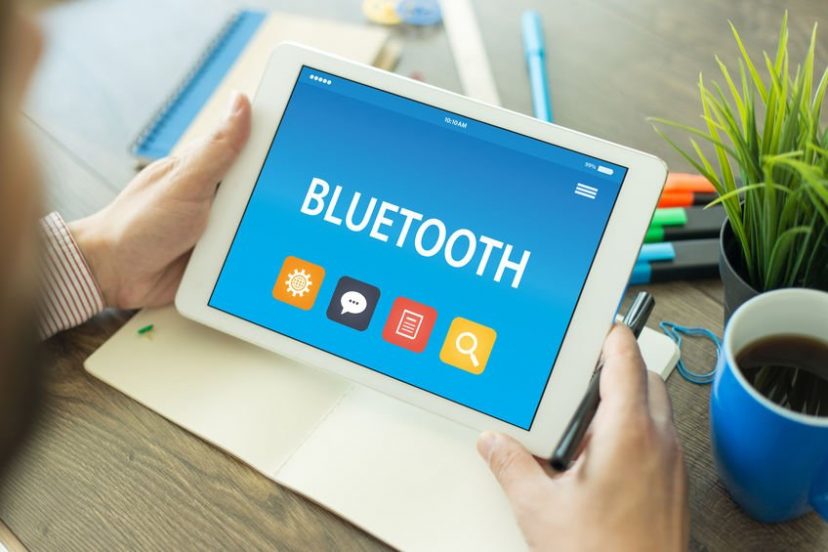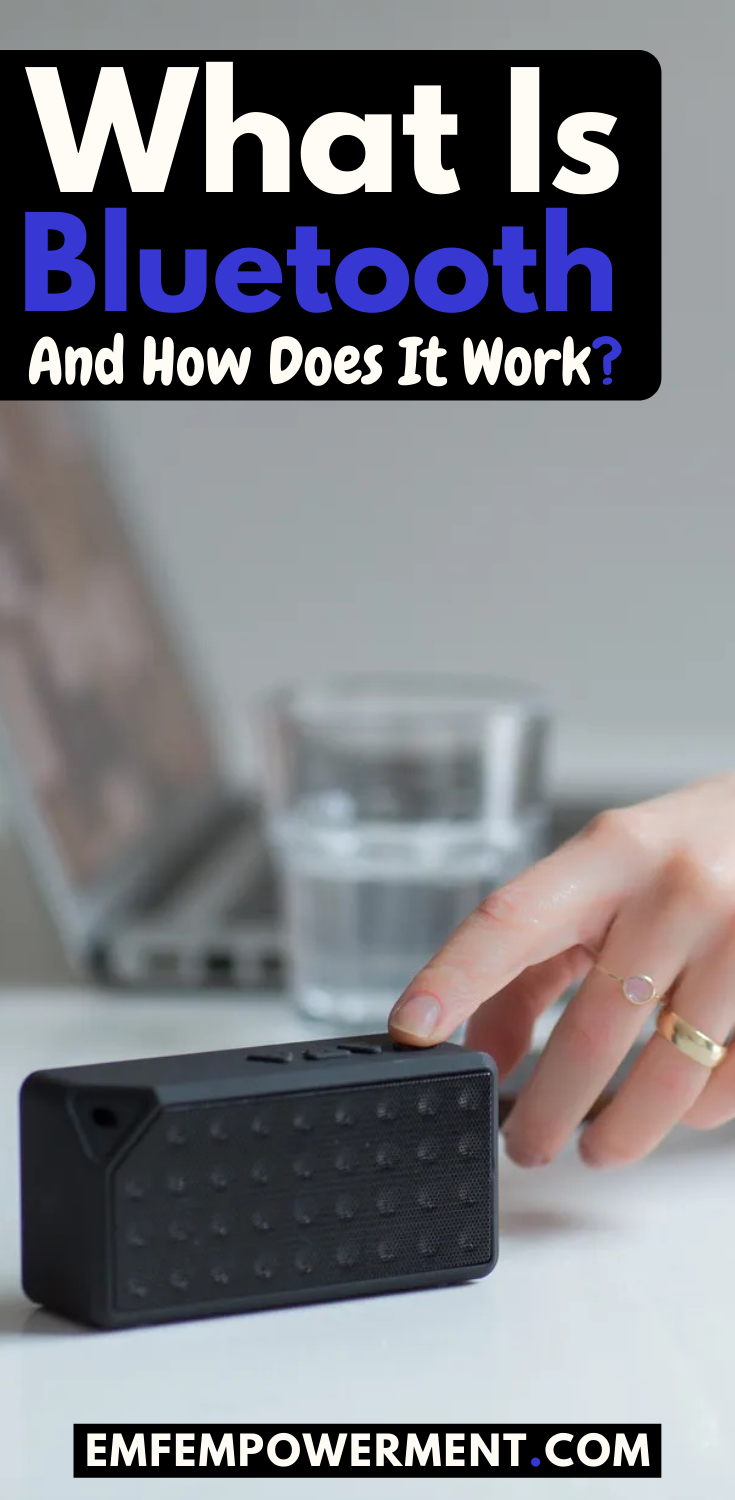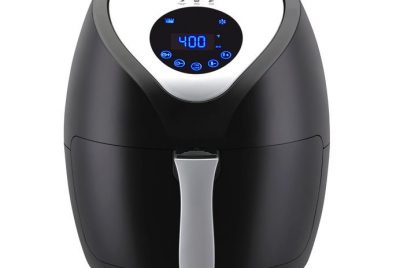On April 3, 1973, the first mobile phone was created. Since then, cell phone technology has…
What Is Bluetooth And How Does It Work?

*We may earn a commission for purchases made using our links. Please see our disclosure to learn more.
Over the past 20 years, the popularity of Bluetooth has grown by leaps and bounds. In modern times, Bluetooth is used for connecting a variety of devices, from headsets to newer car stereos, all without requiring a wire. There is little denying that, from a convenience standpoint, Bluetooth does have benefits.
The primary drawbacks to the technology are more apparent when we examine it from both a safety and security standpoint. First, however, it’s helpful to have an understanding of how Bluetooth actually works.
In this guide, we will go over the history of Bluetooth, how it works, and its place on the electromagnetic spectrum. Then, we will point you in the right direction for finding information on the safety of Bluetooth technology.
Let’s get started.
History of Bluetooth
Bluetooth was introduced commercially in 1999 in the form of a hands-free headset. The technology itself, however, was invented in 1994 by Dr. Jaap Haartsen as a means to replace outdated telecommunications cables. The intention was to find a low powered way to send a signal over a short distance, and Bluetooth fit the bill.
As the potential applications of the technology became better known, it grew in popularity. Sony Ericsson developed the first Bluetooth enabled cell phone in 2000 with the T36, although it wasn’t until the release of the revised T39 in 2001 that Bluetooth phones officially hit store shelves.
Bluetooth 1.0, as it is now known, had a few issues. It could only travel distances of up to 10 meters, at speeds of 721 kbps. This was adequate for a voice call over a wireless headset, but not really for music, and that is what the general public wanted to use it for.
Since Bluetooth 1.0, the standard has undergone numerous revisions in an attempt to improve both speed and range. In 2004, Bluetooth 2.0 was released, offering speeds of up to 1Mbps, or 3Mbps with EDR (Enhanced Data Rate), at distances of up to 30 meters. That was revised again in 2009, 2013, and 2017.
In 2013, Bluetooth LE (Low Energy) was introduced, and it changed the way we approach the technology. Whereas the entire focus before had been on increasing signal strength and range, LE was intended for products such as fitness trackers that really only require a weak signal. Under the current standard, Bluetooth 5.0, the max connection speeds are 3Mbps with EDR for classic Bluetooth and 2Mbps for LE. The max range is right around 240 meters for both.
How does Bluetooth work?
At its core, Bluetooth is all about the sending and receiving of data. You have two devices that need to communicate information, and Bluetooth provides a way for them to do that, without the need to connect them via wires. Let’s take a look at how, exactly, this happens.
A Bluetooth enabled device sends out a radiofrequency signal, between 2.4 and 2.483.5 GHz. These frequencies reside on a spectrum band that is set aside by the FCC for industrial, scientific, and medical devices, therefore Bluetooth devices are really only in competition with each other and not with cell phone signals or other radio frequencies. To reduce interference even further, Bluetooth devices utilize something called spread-spectrum frequency hopping.
With spread-spectrum frequency hopping, a Bluetooth transmitter changes the exact frequency at which it’s broadcasting, while still staying within a given range. Bluetooth devices change their frequency 1,600 times per second, so even when there is a brief period of overlap and interference with another device, it lasts for just a small portion of a second.
Once the first Bluetooth device sends out its signal, it can then be picked up by any other Bluetooth enabled device within range. If there is a recognized, or paired, device present, the two devices can connect to one another automatically. Otherwise, the pairing process must be initiated. This process varies by device but usually involves pressing a button or selecting “pair device” on your phone, and you may need to enter a pin.
When a connection is made, the devices create what is called a “piconet”, or a personal area network. The devices can share data freely on this new network, so, for example, you can make a phone call using your headset or play music from your phone on a wireless speaker. The network also prevents interference from nearby networks, so you can use multiple Bluetooth devices simultaneously in close proximity. For example, you can connect a Bluetooth video game controller to your console while also playing music from your phone on a wireless speaker, all while in the same room and without any interference.
When there are no devices in range for an active Bluetooth transmitter to pair with, it will constantly seek new devices out. That means even when your device isn’t paired, if Bluetooth is active, it is still emitting a radiofrequency signal.
Bluetooth and the electromagnetic spectrum
Bluetooth belongs to the non-ionizing side of the electromagnetic spectrum. Unlike X-rays and gamma rays, Bluetooth radiation lacks the energy necessary to split an atom. Its wavelength is longer than infrared and shorter than extremely low frequencies.
Bluetooth falls under the radio wave spectrum, and is on the 2.4GHz band, just like WiFi and microwave ovens. This signal zone is considered semi-permeable, so Bluetooth can travel through some objects and surfaces but not others. A signal will usually pass through an interior wall, but fall short at passing through denser obstacles such as concrete.
Bluetooth safety
The safety of Bluetooth has not been completely established. It is thought that thermal heating is the only real side effect of non-ionizing radiation exposure, and the regulations are designed to keep devices from burning the skin. So in that regard, Bluetooth is pretty safe — instances of burning from a Bluetooth device are increasingly rare, although in 2018 the company Provata Health recalled 30,000 fitness trackers after three reports of users suffering burns.
The other concern around Bluetooth is related to the radiofrequency waves that it uses to transmit its signal. These waves are a form of electromagnetic field (EMF) radiation. RF-EMF radiation, in particular, has been linked to several negative health effects. Some of these include glioma, heart tumors, other types of cancer, fertility problems, and neurological issues. Individuals suffering from Electromagnetic Hypersensitivity (EHS) also experience a variety of symptoms when exposed to RF-EMF radiation, including dizziness, nausea, and fatigue.
If you want to learn more about the potential health impact of Bluetooth exposure and to read about the existing research, check out Is Bluetooth Safe?
Final thoughts
Bluetooth is here to stay. Understanding how the technology works can help you better prepare for how to safely co-exist with it. 



